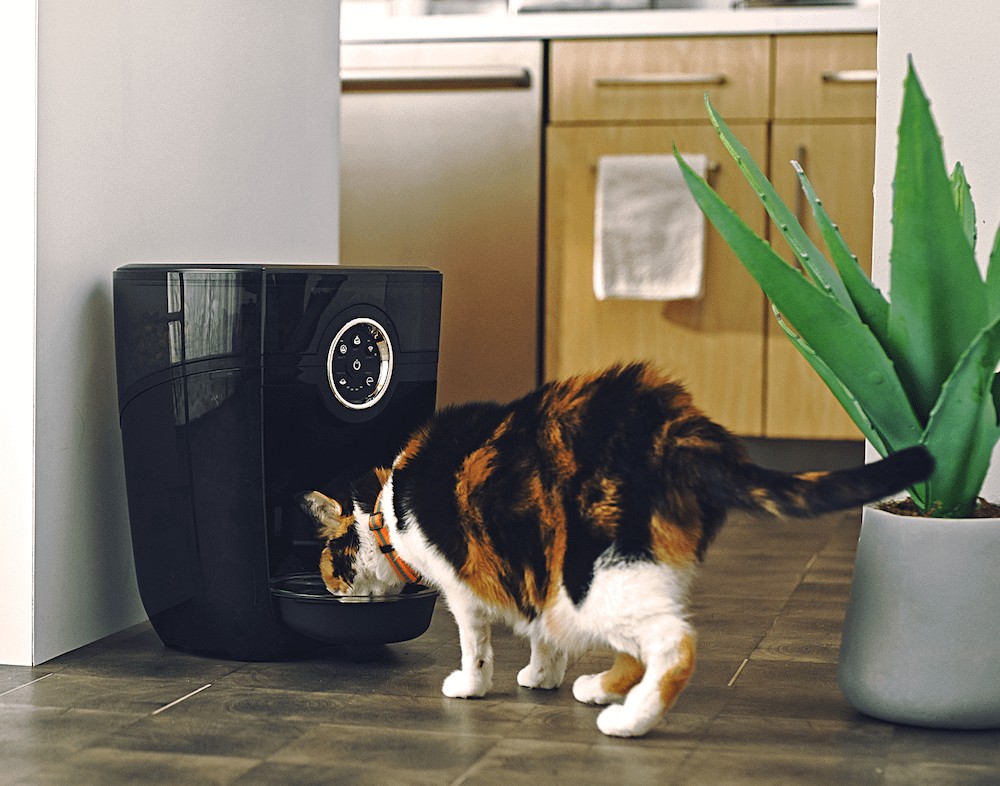Figuring out the right amount of food for your feline friend can be tricky. Many cat owners find themselves asking, “How much should I feed my cat?” The answer isn’t always straightforward, as it depends on several factors. Let’s delve into how to determine the proper amount of dry food for your cat, ensuring they stay healthy and happy.
Understanding Your Cat’s Nutritional Needs
Several elements influence your cat’s dietary requirements, including age, weight, activity level, and overall health. It’s essential to consider these factors when deciding how much dry food to provide.
Key Factors Affecting Food Intake
- Age: Kittens have different nutritional needs compared to adult or senior cats.
- Weight: Overweight or underweight cats require adjusted portions to achieve a healthy body condition.
- Activity Level: Active cats burn more calories and may need more food than less active, indoor cats.
- Health Conditions: Cats with certain health issues, like diabetes or hyperthyroidism, may have specific dietary needs.
General Guidelines for Dry Food Intake
While individual needs vary, here are some general guidelines:
| Cat Type | Daily Caloric Intake | Dry Food (grams/cups) |
|---|---|---|
| Kitten (Up to 6 months) | 2x to 3x Adult Intake | 50-75g (1/4 to 1/3 cup) |
| Adult (1 to 7 years) | 200-300 calories | 40-60g (1/3 cup) |
| Senior (7 years and older) | 180-220 calories | 30-40g (1/4 cup) |


These are guidelines for a healthy 10-pound adult cat. Adjust portion sizes based on your cat’s specific needs and always consult with your veterinarian for personalized advice.
Calculating Dry Food Portions
To accurately determine how many grams of dry food your cat needs, you’ll need to calculate their daily caloric requirements.
Estimating Caloric Needs
As a general rule:
Adult cats typically need approximately 20 calories per pound of body weight per day. A 10-pound cat may need around 200 calories per day.
Converting Calories to Grams
- Check the Food Label: Look at the dry food packaging to find the calorie content per gram or cup.
- Calculate Grams: Divide your cat’s daily caloric needs by the calorie content per gram of the food. For example, if the food contains 4 calories per gram and your cat needs 200 calories, they would need 50 grams of dry food per day (200 calories / 4 calories/gram = 50 grams).
Common Mistakes to Avoid
One frequent mistake is feeding based on a cat’s current weight rather than their ideal weight. If your cat is overweight, calculate their food needs based on their target healthy weight.
Wet vs Dry Cat Food
Both wet and dry cat food have their pros and cons. Dry food is calorie-dense, making it easier to measure and provide the correct amount.
Considerations for Dry Food
- Dental Health: Chewing dry food can help reduce plaque and tartar buildup.
- Convenience: Dry food is easy to store and can be left out for grazing (though this isn’t always recommended).
- Hydration: Dry food has low moisture content, so ensure your cat has access to plenty of fresh water.
The Benefits of Combination Feeding
Many veterinarians recommend a combination of wet and dry food. Wet food provides hydration, which is particularly important for cats with kidney issues or urinary problems.
If mixing dry and wet food, aim for approximately 1/4 cup of dry food twice a day for adult cats, supplemented with wet food as a snack.
Monitoring Your Cat’s Health
Regularly monitoring your cat’s weight and body condition is crucial to ensure they are receiving the right amount of food.
Signs of Proper Feeding
- Maintain a healthy weight.
- Feel their ribs without excessive pressure.
- Exhibit good energy levels.
- Have a shiny, healthy coat.
Adjusting Food Intake
If you notice any signs of overfeeding (weight gain, laziness) or underfeeding (weight loss, excessive hunger), adjust their food intake accordingly.
Other Factors Impacting Your Cat’s Appetite
Several medical and environmental factors can influence a cat’s appetite. If your cat suddenly becomes excessively hungry, consider the following:
Potential Causes of Increased Appetite
- Medical Conditions: Diabetes, hyperthyroidism, and parasites can increase appetite.
- Diet: Inadequate nutrition can lead to increased hunger.
- Behavioral Issues: Boredom or anxiety can cause overeating.
If you suspect a medical issue, consult with your veterinarian.
Choosing the Right Feeding Method
There are three main feeding methods: meal feeding, free feeding, and combination feeding.
Meal Feeding
Offering food at set times each day allows you to monitor your cat’s intake.
Free Feeding
Leaving dry food out all day allows your cat to graze as needed. However, it can lead to overeating.
Combination Feeding
Combining free-fed dry food with scheduled wet food meals can balance hydration and convenience.
Consulting with a Veterinarian
When in doubt, consult with your veterinarian. They can provide personalized advice based on your cat’s specific needs.
Conclusion
Determining how many grams of dry food your cat needs involves considering their age, weight, activity level, and health status. By understanding your cat’s individual needs and monitoring their health, you can ensure they receive the right amount of nutrition to thrive. Whether you choose meal feeding, free feeding, or a combination of both, the goal is to keep your feline friend happy and healthy.
